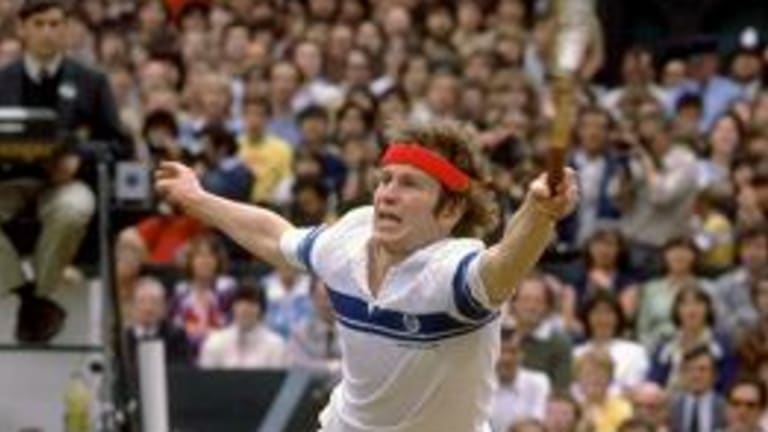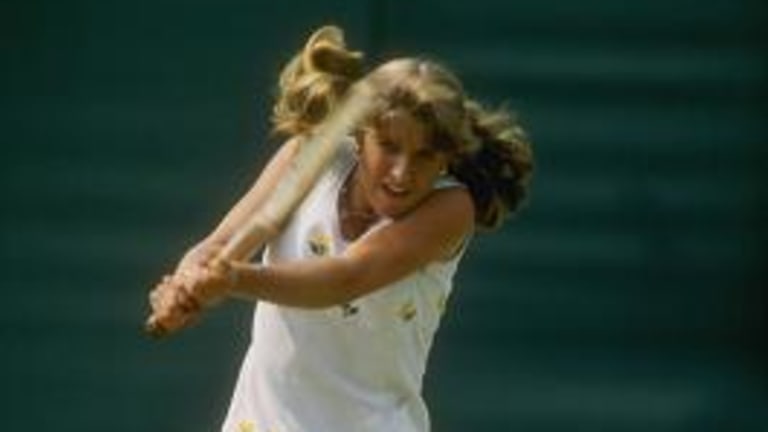After Jonas Bjorkman was blown to pieces by Roger Federer in the Wimbledon semifinals last July, the popular Swedish veteran graciously sang the praises of the greatest precision instrument out of Switzerland since the timepiece. It was a command performance that enthralled the assembled reporters in the pressroom.
But as I wandered away from this exercise in hagiography, I couldn’t help but remember a similar scene that transpired many years earlier in what was then a far smaller interview room located in a bunker deep beneath Centre Court. It was just after the 1978 men’s final, in which Bjorn Borg had dismantled Jimmy Connors with relative ease.
When Connors was asked if he would consider lifting his boycott of the Australian Open if it meant getting another shot at Borg in a Grand Slam venue, his leg began to twitch and his face colored. He said he would do anything to get another crack at Borg. He vowed, “I’ll follow [him] to the ends of the earth . . .”
t may sound like hyperbole now, but the comment trailed Connors for years, and today it serves as the defining quote for a generation—perhaps the greatest generation of warriors, male and female, that the game has produced. Connors’ generation included Borg, John McEnroe, Ivan Lendl, and Mats Wilander; on the women’s side, it featured Chris Evert, Martina Navratilova, Tracy Austin, and Evonne Goolagong. Statistically, the Warrior Generation may be in a dead heat or even a nose behind Pete Sampras and his merry band of Grand Slammers, but no group of outstanding players ever came as hungry for battle and as indifferent to all the other things a player can be besides a champion: gentleman, well-rounded individual, friend, spokesperson, ambassador, fashion plate, icon.
I
While some of those constituents managed to maintain a civilized face—Wilander never tried to decapitate McEnroe with a forehand, as Lendl often did, and Evert played it so cool she was nicknamed the “Ice Maiden”—they had an appetite for combat that players in successive generations have been hard-pressed to match. That, in a nutshell, is the chief challenge facing the 10 players we’ve just cited as potential generation-shaping competitors.
This isn’t an easy issue to frame, given the new status quo. Federer has lulled the vast majority of his rivals into the slumber of also-rans and blunted even his most combative of rivals with the lethal weapon of friendliness. Over in the glittery WTA ghetto, playing your most fearsome and stomach-wrenching rival at nearly every tournament (à la the heyday of Navratilova and Evert, who faced off 80 times) is out, and multitasking in Hollywood is in, along with playing just enough to remember how to keep score.
It used to be different in tennis, at least for the Warrior Generation. This was a group that competed with gusto. Doing so was both a top priority and a value unto itself. Borg spent his entire oddly asymmetrical career bound like a slave to the master of competition. Winning was all he did; it was how he defined himself. The same could be said for Evert. Oh, tennis players longed to be rich, and they hoped to be stars, but back then your best chance to get the bling was to win, and then win some more.
This was partly because, in the pre-Kournikova 1970s and early ’80s, the major financial opportunities were more closely tied to performance and concentrated near the top of the rankings. Connors was curiously driven in the dazzling early part of his career by an apparent conviction that
if he didn’t grab that next $25,000 payday, he may never have a chance for another one. Now that’s incentive. Granted, there’s nothing romantic or noble about this attitude (are we talking warriors or grubbers here?), but you can’t overestimate the role hunger for financial security played in shaping a guy like Connors and, to an even greater extent, Lendl and Navratilova, who grew up in dark times in the nation formerly known as Czechoslovakia.


